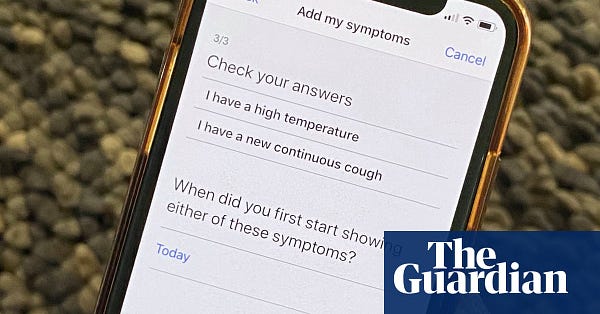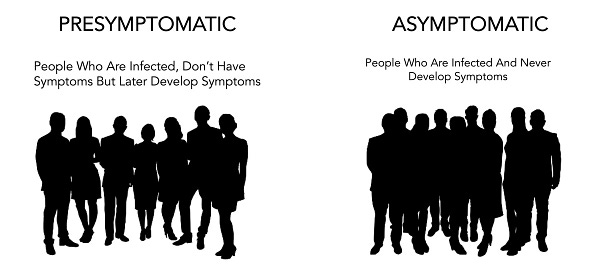🦠 COVID-19| 'Rebound' in cases upon US
📊 Daily Data Brief: (June 10, 2020, 04:50 GMT) (❗️Previous data: June 07, 2020, 22:47 GMT)
Cumulative case: 7,323,799 (+245,219) cumulative cases
Active cases: 3,306,084 (+85,517) (this is the number of currently infected patients)
Total Deaths: 413,733 (+8,772)
Serious/Critical Cases: 54,024 (+361)
Recovered: 3,603,982 3,453,052 (+150,930)
Source: Worldometers
1) Seven-day rolling average of new deaths (updated daily as ECDC releases). Major update with per country graphs now available (Link) (US, UK, France, Germany, Sweden, Nordic Comparison)

Showing a chart from the FT today highlighting the worrying situation in Brazil, Mexico, India and Russia and Iran (NEW❗️). Also the FT comparative charts now allow up to 6 countries

2) Rt estimate per State (US) and per country (NEW❗️). This is a new resource link in the data section from a team which has led accuracy in modelling fatalities in the US for the past few weeks. (Link)


In today’s edition, there is a great Op-Ed on structural racism in science from the Editor-in-Chief of Science journals (Nature also published “Systemic racism: science must listen, learn and change”, and Cell published “Science has a racism problem”).
The pandemic unfortunately seems to head for a rebound in cases in a number of places as noted in an article and a thread looking at the situation in fourteen US states. Independent SAGE are urging the UK government for a rethink of its current test-trace-isolate plan seeing it as inadequate to contain SARS-CoV-2 as the economy continues to re-open.
In New Zealand, the Prime Minister lifted restrictions as the country reported zero new cases. A cause for celebration for her country, a model and hope for other countries in the world.
Carl T. Bergstrom debunks Matt Ridley tell-tale epidemiology article whilst educating its readers on virulence evolution. For Ridley, it seems that once a skeptic always a skeptic.
A series of tweets and a great article covering the controversy from the WHO, with one of its officials making an erroneous claim on asymptomatic transmission on Monday followed by a retraction on Tuesday. Some see it as poor science communication under pressure. Peter Sandman is less kind to public health officials having strayed when addressing the risk of the protests which followed the death of George Floyd.
And finally, a great video podcast on vaccines.
🛑 H. Holden Thorp (Editor-in-Chief for Science journals) writes “Time to look in the mirror” about structural racism in science and to take the right path forward in addressing it. There is a lengthy quote from Dr. Martin Luther King Jr. in the Editorial and his great disappointment with the ‘white moderate’.
An urgent read. (Link)
🇬🇧 Tweet of the Day: Richard Horton (Editor-in-Chief of the Lancet medical journal), tweets a Guardian article reporting on Independent SAGE assessment of the currently planned UK test and trace system which Boris Johnson had claimed was ‘world beating’. (the full Independent SAGE report can be read here). Test-Trace-Isolate capacity is key to safely re-open a country.


👏🇳🇿 Video of the day: New Zealand showing it can be done (Link)


🦠 Thread of the day: Carl T. Bergstrom (Professor of Biology at University of Washington) debunking tell-tale epidemiology in an article of Matt Ridley published in the UK Spectator. (Twitter Thread)
As predicted in a previous edition of the Corona Daily, CT Bergstrom (also author of a forthcoming book “Calling Bullshit”) is having a busy two week period in reviewing unsubstantiated claims such as the one in Matt Ridley’s article.
I would definitely read Bergstrom thread rather than Ridley’s tell-tale as it is a great explainer on virus virulence with a number of great reference papers to support it. If you have already read and were seduced by Ridley ‘disturbing thought’, Bergstrom’s first tweet kills it:


In summary, Bergstrom debunks a somewhat recurring story about SARS-CoV-2 that it would mutate into a less virulent strain. Firstly, this is not an occurrence which is supported by a number of other viruses which have been around for a while. Even in the case of myxoma virus virulence first decreased and then increased later on. Secondly, the virulence evolution of a virus is in a timeframe which will likely not help us in the current SARS-CoV-2 wave, as it takes generation of transmission for such a new strain to emerge. Thirdly, from what we know of SARS-CoV-2 virulence selection is very weak.
An enjoyable and educative read. It seems that Matt Ridley is increasingly turning into a ‘denier’ being already known as climate change ‘denier’ thereby echoing our previous edition: “The deniers: pandemic, climate risk and racism”.
🇺🇸 Kim Bellware and Jacqueline Dupree write “14 states and Puerto Rico hit highest seven-day average of new coronavirus infections” in the Washington Post (Article Link).
This is a rather worrying trend as the rise in cases is hitting more vulnerable areas than the big metropolitan areas - such as New York, Chicago and Detroit:
“The increase of coronavirus cases in counties with fewer than 60,000 people is part of the trend of new infections surging across the rural United States. Health experts worry those areas, already short of resources before the pandemic, will struggle to track new cases with the infrastructure that remains.”
There is also a deeper dive on the situation in North Carolina, in a Twitter thread by epidemiologist and health inequalities researcher Whitney Robinson:


It increasingly looks as if the ‘rebound’ in cases is upon us.
🦠 William Wan and Miriam Berger write “Are asymptomatic people spreading the coronavirus? A WHO official’s words spark confusion, debate” in the Washington Post. The authors provide a good summary of another controversy in which the World Health Organisation got engulfed through a comment from Maria Van Kerkhove, its head of emerging disease and zoonosis unit. In the WHO presser on Monday she said that asymptomatic transmissions were “very rare” to the disbelief of many scientists. The statement was picked up by CNBC and immediately politicised:
“But the comment from Monday had already spread widely and been seized upon by conservatives and others to bolster arguments that people do not need to wear masks or maintain social distancing precautions.”
Eric Topol (Founder and Director of the Scripps Research Translational Institute and a co-author of a recent paper on “Prevalence of Asymptomatic SARS-CoV-2 Infection”) was one of the early scientists to come out on Twitter about the statement and is also quoted in the Washington Post article:


Nathalie Dean (Assistant Professor of Biostatistics at University of Florida) also attempted early on to downplay the significance of the finding in practical terms:

As the debate and controversy continued, the WHO held a special news conference to retract the statement and Van Kerkhove called it a “misunderstanding”.
Some have come to support Van Kerkhove, highlighting the difficulty of science communication combined with the strain of long hours for a few months now in the current pandemic. Others will use it against the WHO claiming that with great powers comes great responsibility. Maybe it should just be a lesson to be learned from, highlighting how much is still unknown about SARS-CoV-2 and the prevalence of uncertainty on the path to discovery which in the case of COVID-19 ultimately calls for precaution including universal masking. (Link)
📣 Peter Sandman writes “Public Health Professionals Should Be Saying THIS about the Public’s COVID-19 Risk Choices”. Sandman felt compelled to write it after witnessing the public health official failing “abysmally to stay in their lane”. It is a five bullet points post. The third bullet point is particular salient:
“The question of when a COVID-19 risk is worth taking and when it’s foolish is not a public health question or a science question. Governments make those decisions; and within the range governments permit, individuals make those decisions. As a citizen, a public health expert may believe that one activity is worth the risk and a different activity is not. That is never a scientific opinion, and we should never pretend that it is. We should never try to harness the credibility of public health on behalf of our judgments as citizens.”
A short and worthwhile read, to regain confidence in public health officials which might have strayed in not differentiating enough their personal judgment with their public health expert status and recommendation when it came to the protests. (Link)
💉 Video of the day: In the first instalment of STAT+ Conversation, Helen Branswell is in conversation with Julie Gerberding, the chief patient officer at Merck and a former director of the Center for Disease Control and Prevention.
Gerberding describes herself as a vaccine optimist and says during the podcast:
“I doubt we’re going to have one vaccine, to win the race that everyone is talking about. I think in the end we’re going to benefit from having more than one vaccine.”
(Video Link)
📊 A picture is worth a thousand words: Global (🌎) and local (with relevant flag) visualisation and forecasting tool
🇺🇸
(NEW❗️) “The COVID Racial Data Tracker”“The COVID Racial Data Tracker is a collaboration between the COVID Tracking Project and the Antiracist Research & Policy Center. Together, we're gathering the most complete race and ethnicity data on COVID-19 in the United States.”
(Link)
🦠 “Science Forum: SARS-CoV-2 (COVID-19) by the numbers” (Link)
“The COVID-19 pandemic is a harsh reminder of the fact that, whether in a single human host or a wave of infection across continents, viral dynamics is often a story about the numbers. In this article we provide a one-stop, curated graphical source for the key numbers (based mostly on the peer-reviewed literature) about the SARS-CoV-2 virus that is responsible for the pandemic. The discussion is framed around two broad themes: i) the biology of the virus itself; ii) the characteristics of the infection of a single human host.”
🇺🇸🌎 This model has led accuracy for several weeks in the US. It also does projection for Europe and Rest of the World. (Link)
🇺🇸 “Is your community ready to reopen?”: A map of the US (50 states and 2,100+ counties) looking at reopening risks with metrics around 3 criteria: 1. Is COVID in retreat? 2. Are we testing enough? 3. Are our hospitals ready? (Link)
🌎The Financial Times (visualisation) has a data tracking page which is in front of the paywall, looking at cases and fatality curves for selective countries and metropolitan areas/region. It is not as extensive as the Madlag link below, where you can see static as well as animated images for a greater number of individual countries. (Link)🇺🇸 The Johns Hopkins University resource center was the first one I used back in January they have now made available in their latest iteration a county by county dashboard in the US including information about health capacity, insurance coverage, ethnicity and age breakdown of the populatio (Link)
💊 The "Map of Hope" provides a geographical overview of planned, ongoing and completed clinical trials. It is put together with data from WHO Clinical Trials Search Portal by the Heidelberg Institute for Geoinformation technology. (Link)



